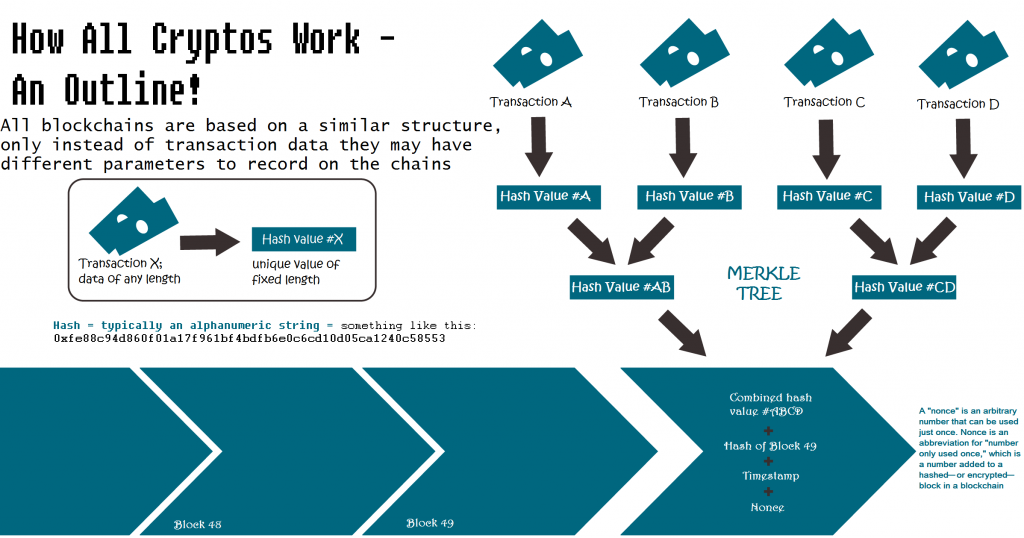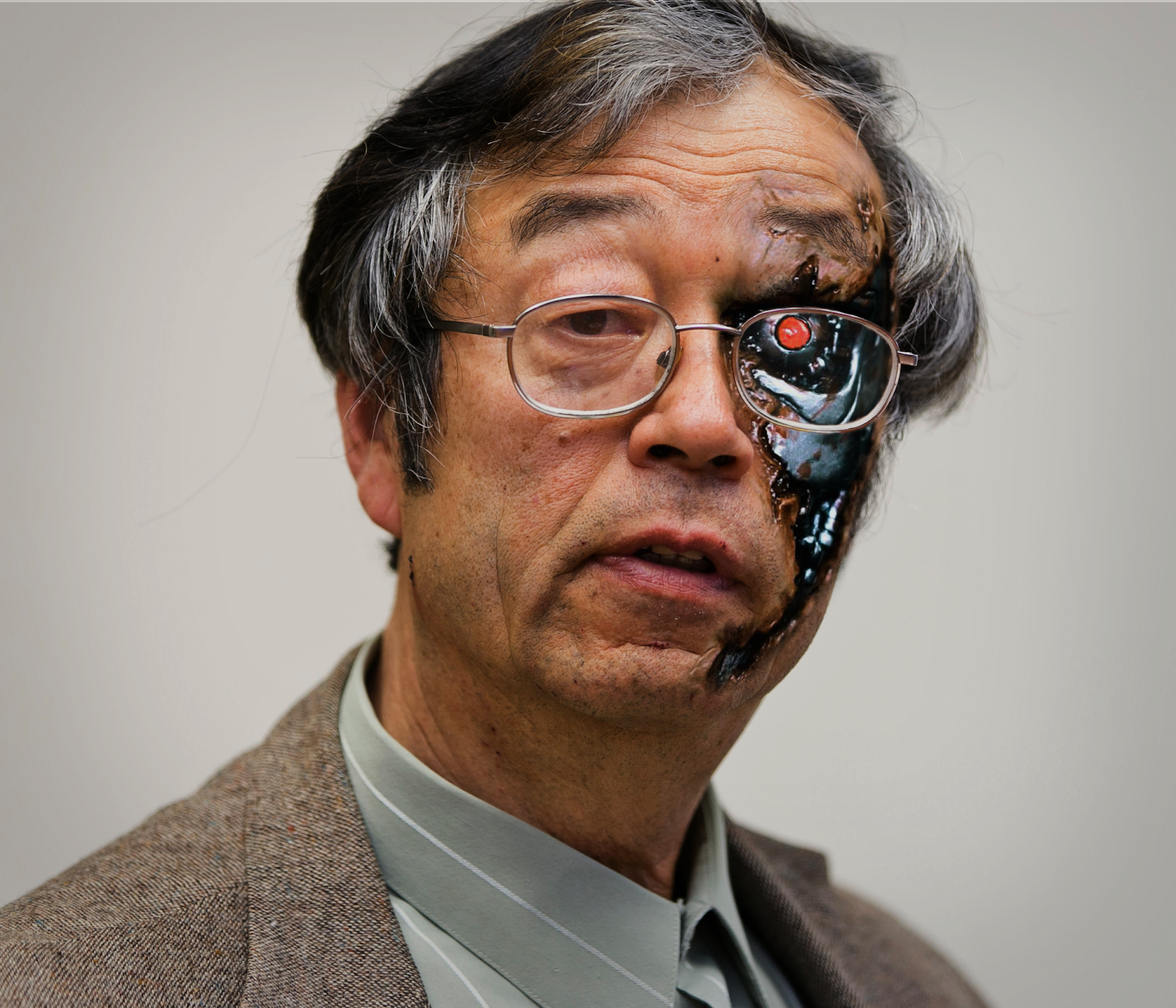Have you been browsing about blockchain applications and decentralized networks? Interested in this for a career? Are you hungry to get your hands on new applications of this exciting technology?
.
.
Are you one of those Byzantine Generals? Do you find yourself interested in Satoshi Nakamoto’s idea or just la-la Bitcoin?
.
.
Have you ever dug deep into the technology only because it is complex and intricately connected? Trust me, the math’s simple but only infinite so boggles our human minds (yes, you’re right, our neurotransmitters cannot switch between quantum states in yoctoseconds, silly!).
.
.
Jokes apart. You guess you have the power to outhink ordinary?
.
.
Want to be the vanguard of monumental change across digital products? Are you one of a kind who adapts, predicts, and learns?
.
.
Do you dream to be part of a highly talented team working with new & emerging technologies with novel product ideas that improve people’s lives in multiple ways? Hang in there!

.
.
Topics covered
Just rambling into..
The 21st century has witnessed tremendous alterations in industrial processes and production technologies ushering in an era of digital transformation which implements digital alternatives to almost all possible processes that yield a product of use.
“Digital Transformation” is an empty buzz phrase without a culture that allows for innovation.
Even if you are not particularly familiar with the technology, you must have heard the word “Blockchain” and believe it to be synonymous to “Bitcoin”? Well, most beginners have to face the same thought juncture.
Are you also familiar with the word “Ethereum”? It is the runner-up to Bitcoin in terms of absolute fiat value today (Most coin & paper currencies that are used throughout the world are fiat money. This includes the U.S. dollar, the Indian rupee, the British pound, and the Euro. There are 251 more.).
So you also must know that Bitcoin can be equated to around 34,504.00 USD today (maybe more when you are reading this!) and Ether (the currency of Ethereum) is at 1,061.86USD.
.
.
Blockchain is not all about Bitcoin but Bitcoin is all about blockchain. Blockchain is a technology and Bitcoin is an application and the first one, hence the confusion. We’ll read about multiple applications here as we go along..
Blockchain involves intricate digital technology and cloud networking implemented through plain vanilla coding! The programming/scripting maybe complex but the math is simple. Just permutations and combinations.
.
Szabo or Nakamoto?

This post is neither about Bitcoin nor Ethereum. This is about the technology “blockchain” which was originally circulated through a publication in 1998 by Nick Szabo on “bit gold”, which was one of the precursors of Bitcoin! It fact it is conversial that Szabo is Satoshi Nakamoto, the inventor of Bitcoin (2008), although he has repeatedly denied this. A primordial concept of DLT is believed to have been proposed by Wei Dai of Microsoft Corporation in the year 1998 as well.
.
.
What’s DLT?
So, “blockchain” is simplest and most common example of the DLT which stands for distributed ledger technology. This is a method of storing huge amounts of data (think exabytes to zetabytes: 1018 bytes / 10 6 GB or more) digitally in the form of blk.dat files (a special type of document).
Now, these files are chained together to form a long expandable series of numbers called “hash” (something like this: 0xfe88c94d860f01a17f961bf4bdfb6e0c6cd10d05ca1240c58553). Every file is hashed to create a unique idenfier (a number) and these hashes are appended together to form the chain.
Now, the challenge is to discover a new number everytime for a new file and this needs huge computing power. In a year, Bitcoin blocks consume the same amount the electrical energy as Switzerland!

.
.
Blockchain is implemented through DAPPs
DAPPS (a kind of software).
DAPPs are full stacks of code sets developed / borrowed by any company (operating in various domains such as healthcare, manufacturing, automotives, finance, law etc.) which intends to implement blockchain related technology to be used in their own business to cater to business needs as for an example, a startup focusing on storing health data of every subscriber on a blockchain to be used by hospitals / healthcare centers etc. This will be done via a DAPP. Now, talking of cryptocurrencies, currency that is listed on an exchange also uses a similar DAPP architecture to build its blockchain.
.
.
So how is “Bitcoin” and “Ethereum” linked to blockchain technology?
These are digital currencies, means you can buy an amount of Bitcoin (BTC) or Ether (ETH) (with any fiat currency) and transfer them to someone (transactions/payments), even across the world, in minutes. As of now, Bitcoin is the slowest as most alphanumeric combinations of identifiers for the Bitcoin chain are already used up and finding a new one without matching any of the earlier ones is extremely difficult.

.
.
Transactions are encrypted
These transactions are encrypted (again with a similar alphanumeric keycode) and continuously added to form a new block say consisting of 500 such transactions. You can imagine how long the keycode/identifier of a single block becomes eventually. You can go back to the Merkle Tree diagram on top. Thereafter, this single block is added to the previous blocks forming the chain. The first block or the genesis block for the Bitcoin chain was introduced by Satoshi Nakamoto on January 3, 2009 and this chain has continued ever since.
.
.
Why is this system considered decentralized?
Because, anybody with any computing apparatus (called miners) from anywhere in the world can hash the transactions for these blocks (called block mining) and earn in real cash, but this requires huge infrastructural costs so now mining pools have emerged which aggregate computing powers of various miners and share it through cloud to cut down costs, time, efforts. 80% of Bitcoin mining is done in China. China has the largest pools in the world. India is at 2%.
However, China seriously considers Bitcoin wasteful and wants to ban mining but like it is for all peer-to-peer networks (think bittorrent), it is impossible to ban the system without wiping out the internet!

.
.
Distributed vs decentralized
Now, an important thing to note here is that blockchain technology typically used by any company (outside of cryptocurrency sector) is “distributed” but cryptocurrency blockchains are “decentralized”. This means when a company has its own blockchain to store any type of data, the blocks on the chain can be generated (not mined) by select employees of that company or key accounts (mostly they are all pre-generated as already discussed) but cryptocurrency blocks can be generated (mined in exchange for money) by anyone anywhere in the world. Mining only comes when done in exchange for fiat money.
.
.
Now how do you earn through mining?
For every block that is mined, 12.5 bitcoins (BTC) are earned by whoever mines the block. (1 Bitcoin block = 12.5 Bitcoins) Ethereum similarly gives 3. (Values may have changed a bit when you’re reading this). Additionally, individuals get a transaction fee that is coupled to every single transaction. Bitcoin has a different chain of blocks, Ethereum has a different chain and so have other alternative coins (altcoins) that are being developed or any other chain used to load any type of data not just currency transactions.
.
.
If you are interested in mining,
..it may give you a career spanning more than 2 decades till the total stock of digital currencies last. Once 1 stock gets over, you can choose to mine a different coin which has probably just been introduced to Dex! Take for an example, Bitcoin will last a few more years or so with just 1/3rd of it left to mine (the total number was 21 million coins). However, Bitcoin.com has saved around 1 million inactive coins to be introduced when the global supply is tapped out and demand is high. Similarly, Komodo has total capacity of 200 million coins that should last a good 14 years and also saved around 100 million coins for future use.
.
.
Block mining is an industry which is knotted to cryptocurrencies only.
As you can understand, blockchain is the technology that is used to create such coin systems to bring the world closer together, nothing else and since these coins have an intrinsic commercial value, creating blocks is a way to earn as 1 block = y coins = x USD. Bitcoin, or any other coin for that matter, is not a technology. It’s not a company. It’s your own money, which is simply held in a digital format.
.
.
Most other companies..
..which are operating in industrial sectors other than cryptocurrency as is discussed in the following sections, have their blocks pre-mined or already generated and hence the amount of data that can be stored is pre-determined. This is not the case with cryptocurrencies, the amount of data although is pre-determined as we do not have infinite computing power as of now! Except Ethereum, all other cryptocurrencies follow an ex post facto method meaning the blocks are generated after the transactions are initiated.
.
.
Some common cryptocurrencies are Bitcoin, Ethereum, Litecoin, Ripple, Komodo etc.
Now one day if you wake up with a plan of creating new coin (a new cryptocurrency) and registering it on an exchange (like BitForex, Binance, Huobi etc.), you can very well do it! Get yourself to fork suitable codebase from GitHub, add your unique features, launch testnet / mainnet and pay listing fees (mostly over 5 lakhs INR) to your exchange!
Boggled huh? No education is classified or codified today, you can get the hang of it through millions of databases across the internet today.
.
.
Moving on.
Blockchain has applications across various other industrial sectors too as for examples, manufacturing (AI/ML), automotives, financial services, law, healthcare, real estate, banking etc. Remember DAPP? Regress a few paras back to rekindle your mind!
Every company has to code its own DAPP / borrow DAPP templates from repositories available across the world and start creating a chain to store data to satisfy respective business needs depending on what type of data they want to store.
Example 1
Say for an example, blockchain may also be used to generate unique identifiers (alphanumeric strings) for crores of images in order to train a computer or robot in learning from experience such as identifying an image or speaking / understanding a human language etc. This is another use for quantum computing as such an “identifier generation system” would require huge computing capacities.

Example 2
Have you ever tried to find all the prime numbers possible till infinity writing a code in Perl or any other scripting language? Your machine will immediately crash and generate too much heat and ultimately fail. Such simple but indefinite calculations are made possible with quantum computers. Similarly, in the case of blockchain, powerful computers are required which will only be used for hashing blocks and no other task.
Example 3
Likewise, blockchain technology can be used in the healthcare industry to store a patient’s disease histories or clinical profiles across numerous hospitals, healthcare centres, medical facilities and various disease areas. Ease of access can be defined considering the business type or needs i.e. a patient / physician / researchers / health tech software developers can access the data stored in the blockchain.
Example 4
Law is another thrust area where blockchain can be implemented. This will do away with lawyers if you think! Any legislative document or legal contracts (called smart contracts) can be registered onto a blockchain network and the possible outcomes can be triggered automatically when say suppose a date expires or a clause is not met etc. Such contracts may be between two parties / firms / franchisor-franchisee etc.

Example 5
Blockchain is already active for transportation enablers such as Uber or Ola. Uber now runs on blockchain by connecting drivers and passengers directly via the advanced Chandra–Toueg consensus algorithm of blockchain.
.
.
To our benefit,
..at any point in time, any particular data point / hash or any particular contract can be tracked and revisited to reconsider or refer to. This facility of regression is an inherent property of blockchain technology and has immense advantages considering the several impediments that may arise during the course of a business.
.
.
In case of Bitcoin, all transactions are public,
..traceable, and permanently stored in the Bitcoin network. Bitcoin addresses are the only information used to define where bitcoins are sent following every transaction. The Bitcoin addresses are created privately by each user’s wallet. Any user can visit https://www.blockchain.com/explorer to look up a bitcoin transaction and use the search bar on the upper right to learn more about a particular bitcoin address, block number or transaction hash, by entering it in the search field.
.
.
The Math?
Now, all of this and the simple math requires tremendous LOE (level of effort) on the part of software architects and developers for creating the software capable of hashing these blocks. You can either be a coder to design & develop the algorithm for blockchain software (for all industrial sectors utilizing this technology including cryptocurrencies) or construct a block miner / join a mining pool (for altcoins only; Bitcoin mining is not a lucrative option anymore considering the huge investments that you have to make to set up a miner but other currencies are still on the rise).
.
.
It’s a Wrap!
Hope you got things partly settled in your mind by now. Go back if you wish! This was about the very basics of the structure of blockchain technology. There’s so much more to blockchain, Bitcoin, Ethereum, block mining and related technologies.
If you wish to have a career in this field, its best to map out your talents and inherent qualities way before you wade into the waters and come back hurt, with a heartburn and a pocket-punch (not a pinch, silly!).
Understanding the intricacies of any career is not child’s play. It requires experiential assessment of competencies (skills, abilities, knowledge & a lot more). So, career counseling is an indispensable tool for all young minds given the harsh industry dynamics today and we are India’s leading provider in this space. iDC is also one of the world’s foremost test-administrator in career design.
Useful Links:
- Blockchain Developer: Jobs, Salaries, Companies
- A Career in Mining Engineering: Guide You Might Need
- Data Science: A Complete Guide to Stay Ahead
- A Brief Introduction to MBA in Digital Marketing
.

With a Master’s in Biophysics-Biostatistics, Sreenanda acquired professional experience in computational proteomics of human molecules. She is currently working with the Research and Data Team at iDreamCareer.











Pingback: Banabir Pal
Pingback: Vaibhav Jain
This is a wow read!
Thanks.
Elon Musk has really been tweeting about Bitcoin. His tweets about Tesla’s BTC have been affecting the market substantially. I have a lot invested through Coinbase. Someone take away that man’s Twitter!
Hey Rafaela! Musk has recently also banned BTC as a payment method (he still claims to hold USD 1 bill worth of BTC!) and China’s recent crypto ban has made an insane impact on the crypto world. Yesterday, it came rumbling down 50%. DeFi and crypto both anyway come with high-risk and high-volatility. One should not invest in case a loss of 2-3k USD is a huge loss. Hope you recover it soon!
This does not talk of halving
Why the oversimplification?
Hrmm that was weird, my comment got eaten. Anyway I wanted to say that its nice to know that someone else also mentioned this as I had trouble finding the same info elsewhere. This was the first place that told me the answer. Thanks.
Thanks, what a good post and informative blog, I will bookmark this blog. Thanks
This is really a great write up.